We’ve already written about arriving in Casamance via “the back way.” If you happen to use that border crossing, the first substantial village you will come across is Abené.
We have been visiting Abené since early 2017, and it’s one of our favorite spots in all of West Africa. Just a few kilometers south of Abené is the larger village of Kafountine, another town that is worth checking out as you make your way south to Ziguinchor, Carabane or Cap Skirring.
Here are a few recommendations if you find yourself in this corner of Casamance.
Abené
One of the first things you will notice about Abené is that there are a fair few expats wandering around. Once you get to know the place, it’s easy to understand why.
Abené has the air of a rastafarian beachside village, but the rastas aren’t actual rastas – most of them are actually Baye Fall, a sect that belongs to the Mouride Sufi Brotherhood – and instead of cheap Bob Marley tributes, you will find rich Diola culture and hospitality.
Where to stay
The Little Baobab – known as Chez Simon and Khady by many in the village – is our spot. Simon died tragically in a car accident in 2017, but his wife, Khady, continues to run the hotel. The Little Baobab is an ecolodge carved out of a patch of jungle.
The traditional bungalows are clean and comfortable with composting toilets and solar power. They are very basic, but what the place lacks in amenities it makes up for with the family atmosphere, the homestyle meals and the relaxed vibe at Khady’s jungle bar.
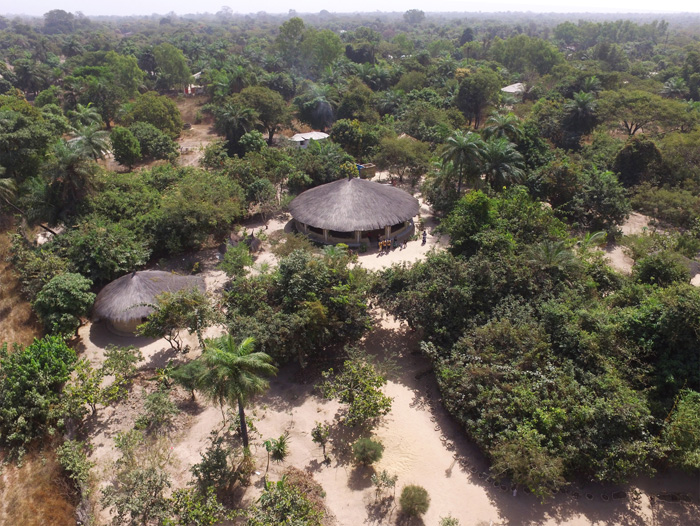
Rooms are cheap (a single is 10,000 cfa and a double is 15,000 cfa) and the food is as well. Expect to pay no more than 3000 cfa for meals, which are often served in a communal setting at the bar.
About a kilometer from where the village of Abene starts and towards the beach, is the Guesthouse Diabatalo on the left. In the middle of nature and within walking and cycling distance of the market of the village on one side and the beach on the other.
The site consists of 3 African style houses, each with a bedroom and bathroom. If you want more luxury, you can book the self-sufficient 2-room apartment with hot water boiler. The rooms are equipped with basic amenities: floor mats, twin or single beds, mosquito nets, fan and running water. Electricity is 220v in the rooms. There are all the amenities necessary for a good stay.
The terrain is 1.5 hectares spacious and richly covered with trees, flowers and shrubs. There is running water, a well and electricity is available throughout the grounds. A friendly and tranquil spot by the beach. They also offer a variety of tours and workshops.
What to see and do
There is no reason to get carried away here. Abené is the perfect place to relax with a beer and/or a book on the beach, wander the streets and chat with locals, and experience a drumming and dance performance.
The beach – Abené has a clean beach with currents that are not particularly dangerous. There are several small shacks selling beer and soft drinks. It’s very relaxed and you never have to worry about sharing the beach with too many people.
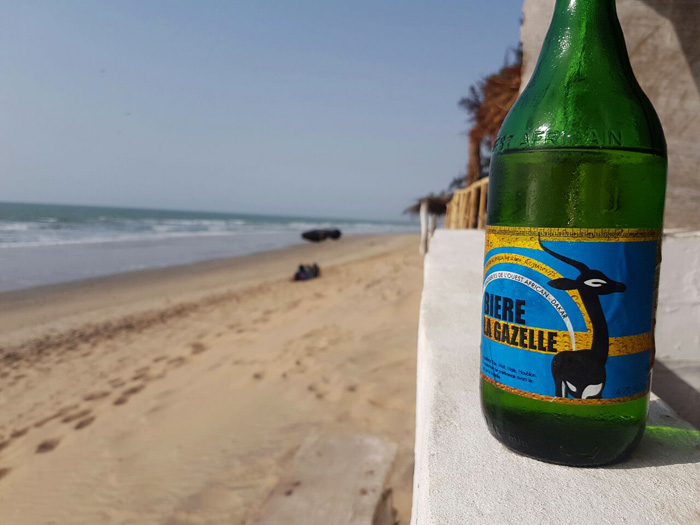
Drumming and Dance – you can organize both classes and performances through places like the Little Baobab. If you really want to go all out, you can spend about 50,000 CFA and hire an entire dance troupe complete with costumed dancers and drummers.
Otherwise, you can expect to pay about 5000 cfa (the price is negotiable) for an hour of drumming or dance classes. You can also go to Freedom Sound at night if you want to see some reggae or some local live music. Wednesday night is often a big one.
Bantam Wora – this sacred tree is actually six fromager (kapok) trees that have fused together. It’s an impressive sight and should not be missed. To get an idea of its size, here is a picture of Phil in the roots of the tree(s):
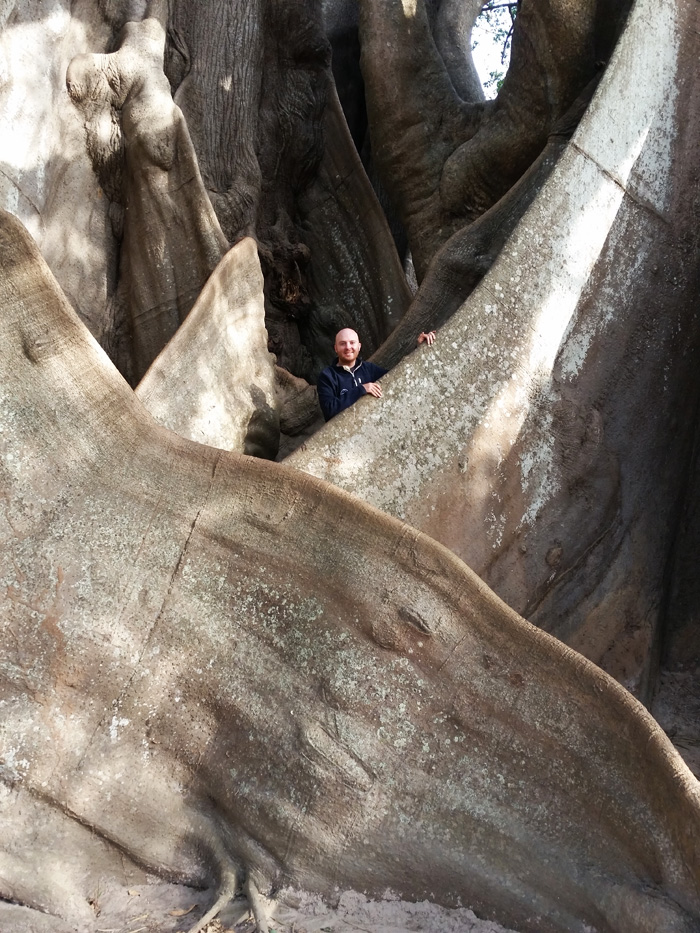
There is a women’s association that looks after the tree and the area surrounding it. Expect to pay 1-2000 CFA to the association in order to visit the tree.
The Abené Festival
Abené hosts a festival every year between Christmas and New Year’s, featuring musicians and dancers from throughout the region. Daily performances and parties culminate in a giant bonfire on the beach on New Year’s. If you can time your trip right, this is not to be missed. The festival rightfully attracts a lot of attention, and accommodation can fill up quickly, so be sure to book in advance.
Eating and drinking
There are plenty of local spots serving delicious Senegalese food, but you could easily eat all of your meals at the Little Baobab.
The other hotel with baobab in the name – Campement Les Baobabs – also has a good restaurant and they are located right on the beach.
Beer is served just about everywhere, and you don’t have to go far to find a cold gazelle. Nightlife is somewhat limited but there are a few reggae bars and maquis. Do check with the locals and see if there are any concerts, dance performances or other events on while you are there.
Getting Around
If you don’t have your own wheels, you can easily source a spot in a sept-place bush taxi or you can hop on the back of someone’s motorbike. Negotiate the price beforehand, but don’t expect to pay much, especially if you are just moving around the village.
Kafountine
Kafountine sits about 9 kilometers south of Abené. It is a bigger town with much more to offer in terms of shops and restaurants. While Kafountine also offers beach access, the fish market takes up most of the waterfront property. It is not as good as Abené for swimming, but it’s certainly worth checking out the market, where at any given time tens of thousands of fish are being smoked before they are sold off and shipped inland.
Where to stay
We typically stay in Abené and then cruise down to Kafountine to eat and drink. We also use Kafountine as a jumping off point for trips into the mangroves further south. However, we can recommend Couleur Cafe, which is located on the main road on the right side if you are heading towards the beach or fish market (see the map above). Couleur Cafe has an excellent restaurant in addition to a handful of rooms in the back garden.
What to see and do
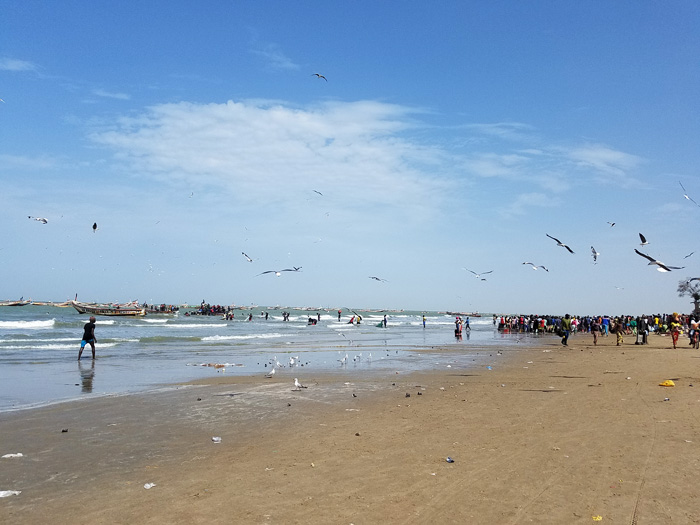
The fish market and beach – this is one of the most active fish markets in the region. Boats cruise into the beach with their nightly catch and vendors sprint back and forth between the water in the market with crates of ice on their heads while hundreds of gulls swarm overhead. It is a sight to see.
Wander the beach – at low tide you can cover a lot of ground. South of the market, the crowd thins out and the beach returns to its deserted state. Don’t be surprised to see some cows wandering around!
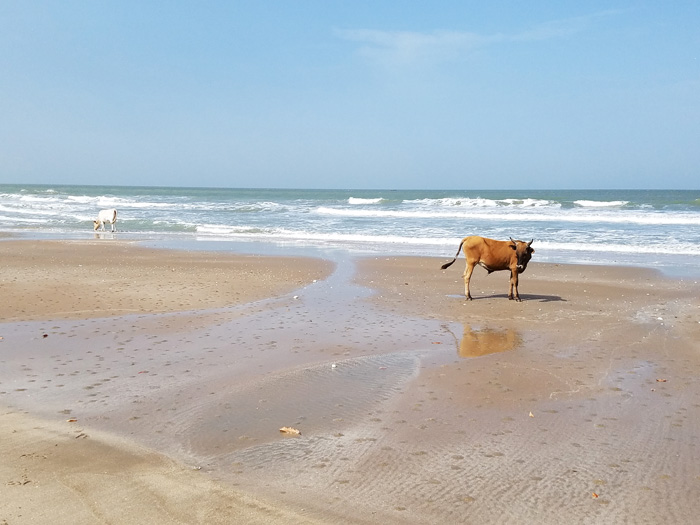
Take a boat trip – one of the best ways to enjoy Kafountine and the surrounding area is by taking a boat trip. You can take a trip out to several islands (one of them is known for its birds and one is known for its cannabis farming!), and you can also travel through the mangroves all the way to the Casamance River.
You will be truly spoiled if you are interested in fishing and/or birdwatching. We can recommend Aliou, a fisherman and guide who has his own boat, if you want to take such a trip. He can be reached at +221 77 327 18 60. He is based in Kafountine just south of the fish market on the beach.
Eating and drinking
There are number of great local joints, but our two favorites are far and away Chez Kathy and Couleur Cafe. At Chez Kathy, expect fresh seafood and local dishes. At Couleur Cafe, you can find the same, but with more European dishes and some of the best coffee you will drink in the Casamance. Both establishments are reasonably priced. You can find them on the map above.
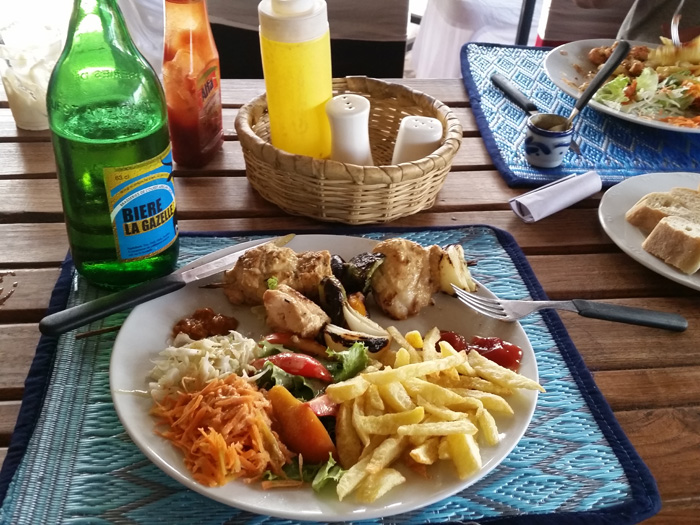
Getting around
As with Abené, it’s easy to find bush taxis and motorbike taxis. You can easily organize transport to Casamance as well as to the border of the Gambia.
Practical information
ATMS – there are no ATMs in Kafountine or Abené at the moment, so make sure to bring plenty of cash. There are, however, plenty of money transfer services, such as Orange Money and Wari.
Maps – we recently posted an article about smartphone apps that are useful for traveling West Africa. One of the apps we recommended was maps.me. It’s hard to overstate how useful this app is in the Casamance.
If you look at Google Maps, you will see a block of seemingly impenetrable land south of Kafountine. When you look at maps.me, you will see hundreds of waterways. The other benefit is that you can download the maps and use them offline, and because the app uses GPS and not an internet connection, you can always see where you are located.
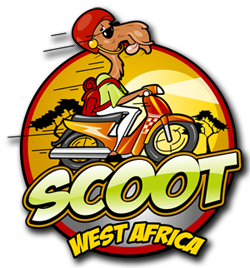
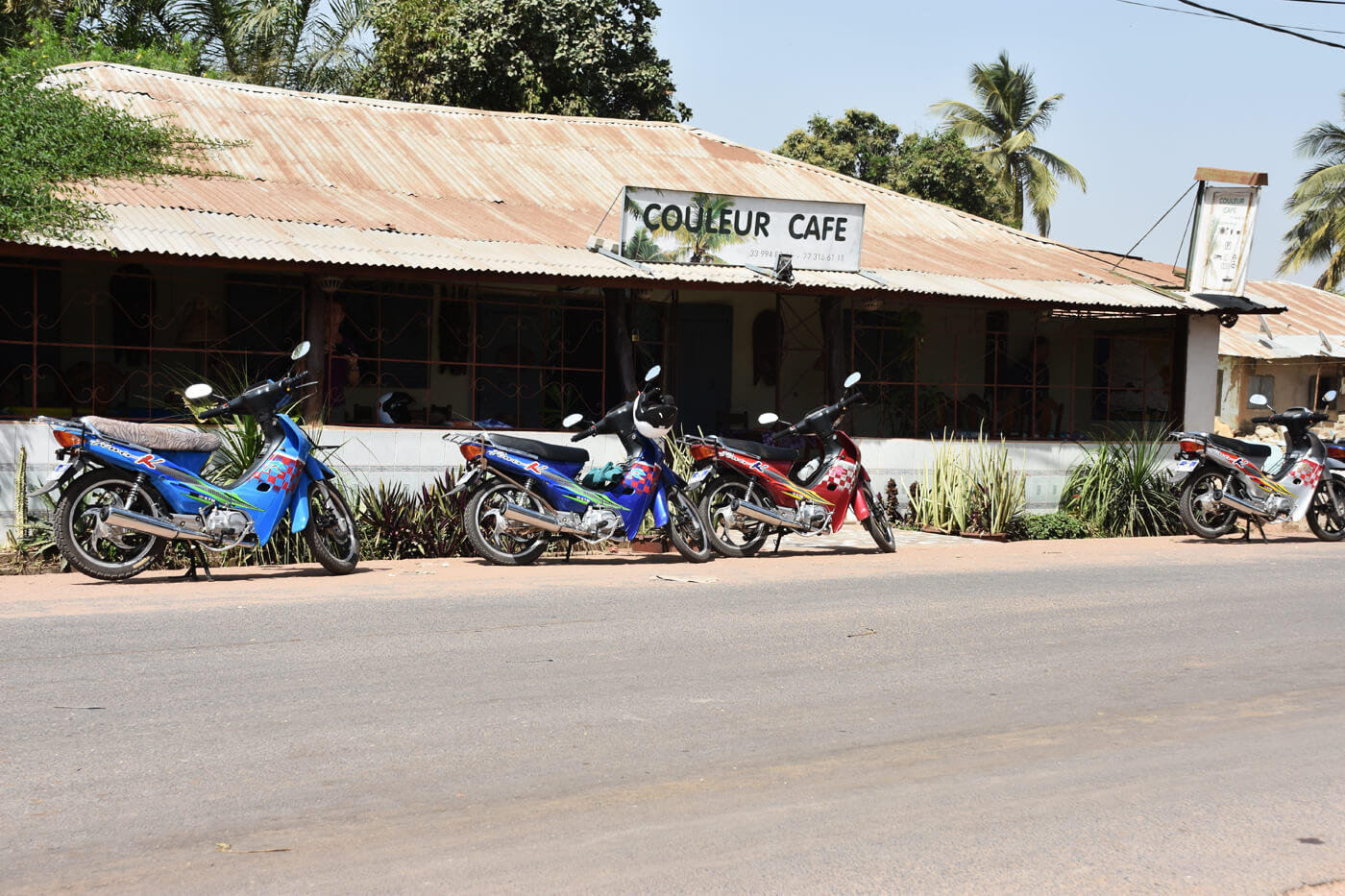
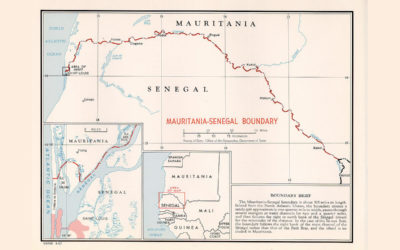
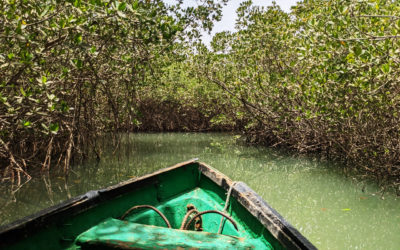
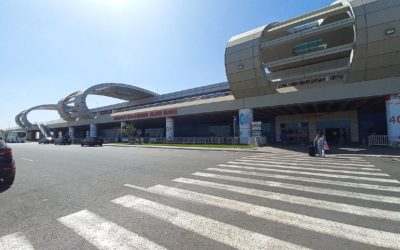
0 Comments